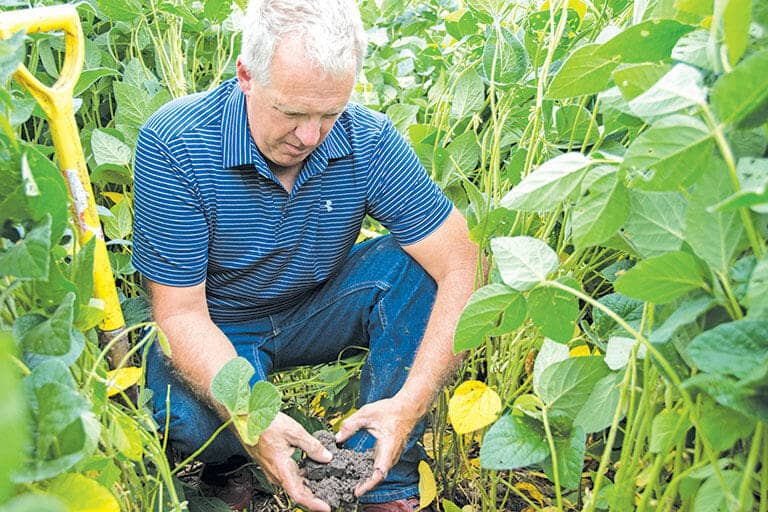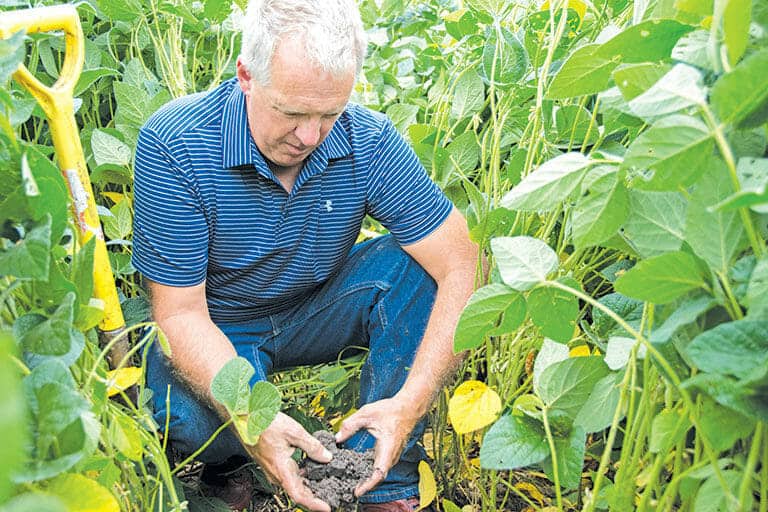Photo courtesy Soil Health Partnership
KALONA, Iowa — Returns from conservation practices may be hard to quantify, and management challenges difficult to overcome, but Southeast Iowa farmers Steve Berger and Francis Thicke see viable solutions to preserve Iowa’s topsoil and reduce nutrient loss.
Berger and Thicke spoke at an event hosted by the Sierra Club of Southeast Iowa and the Iowa Valley Resource Conservation and Development at the Kalona Library May 16. A former USDA soil scientist, Thicke runs an 80-cow certified organic dairy on his farm near Fairfield, Iowa. Berger farms 2,200 acres and operates a 15,000-head hog operation near Wellman. Thicke discussed how the EPA’s Gulf Hypoxia Action Plan 2008, which was created to address excess nitrogen and phosphorus loads in the Mississippi River Basin, led to the creation of the Iowa Nutrient Reduction Strategy. But he said only 2 to 3 percent of Iowa acreage is now in cover crops, and nutrient levels in Iowa streams have yet to reverse their gradual uptrend. “Not enough farmers are participating,” Thicke said. He supports a “flexible regulatory approach” to address nutrient loss on the federal level, describing how regulators could use an equation to set a nutrient loss […]
Full article: Farm conservation leaders describe trials and solutions
More about no-till farming:
No-till farming can help save water, proponents say
Farmers’ efforts to help environment benefit Lancaster County farms
Cover Crops Look to be Changing Runoff Dynamics in Kansas
USDA: study finds no-till farming alone not sufficient to prevent water pollution from nitrate



